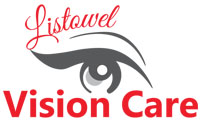What is lazy eye or amblyopia?
Amblyopia a condition referring to the vision in one eye being weaker because the eye and brain are not properly working together. Any condition that prevents the eye from focusing correctly during the early stages of development can cause amplyopia.
If detected and treated it will often go away. It is important to treat amblyopia early with vision therapy, eyeglasses, contact lenses, eye drops and/or patching as treatment becomes more difficult later on. It is estimated that two to four per cent of children under the age of six have amblyopia.
What causes amblyopia?
Amblyopia may be caused from a large focusing error such as far sightedness (hyperopia) or astigmatism in one or both eyes. It can also happen in glasses wearers when there is a significant difference in the prescription between the two eyes, resulting in two different sizes in images.
Amblyopia can be caused by the misalignment of both eyes. This condition is called strabismus (crossed eyes).
Occasionally, amblyopia is caused by the front part of the eye being clouded, a condition called cataracts, or a drooping eyelid. When an affected eye sends poor images to the brain, or none at all, the brain ‘ignores’ that eye. Over time, fewer connections are made between the brain and the affected eye. It is the lack of connections that causes an amblyopic eye. This is why glasses alone cannot correct the problem. To strengthen the amblyopic eye, the eye itself must be used and connections between it and the brain must be re-established.
One way to achieve this is by putting a patch over the good eye and forcing the brain to use the lazy eye. An even more effective treatment involves having your optometrist blur or fog the good eye by a certain amount. This is part of a program called optometric vision therapy.
Is the amblyopic eye blind?
The amblyopic eye is not blind. It sees an image, but not clearly. Amblyopia mostly affects what the eye sees straight ahead (the central vision). Peripheral vision is less affected.
What are the signs/symptoms of amblyopia?
For the most part, there are no symptoms of amblyopia. Since only one eye is affected, the other eye usually has reasonably good vision and can take over all visual tasks. That is why children with amblyopia may not realize they cannot see properly out of both eyes.
Amblyopia can result in reduced depth perception. Studies show those with amblyopia are more likely to have accidents that cause eye injuries over the course of their lives. This can have serious effects, if the injury happens to the good eye. Sometimes amblyopia is associated with strabismus (crossed eyes), which has its own signs and symptoms.
How is amblyopia diagnosed?
A comprehensive optometric examination can tell if you have amblyopia. The earlier it is diagnosed, the chances of a complete recovery are higher. Therefore, it is important to have your child’s vision examined at six to nine months of age, again at age three, and then yearly.
Source:
“Amblyopia” Ontario Association of Optometrists, Retrieved 13 June 2019. <https://www.optom.on.ca/OAO/Patients/Library/Amblyopia.aspx>

